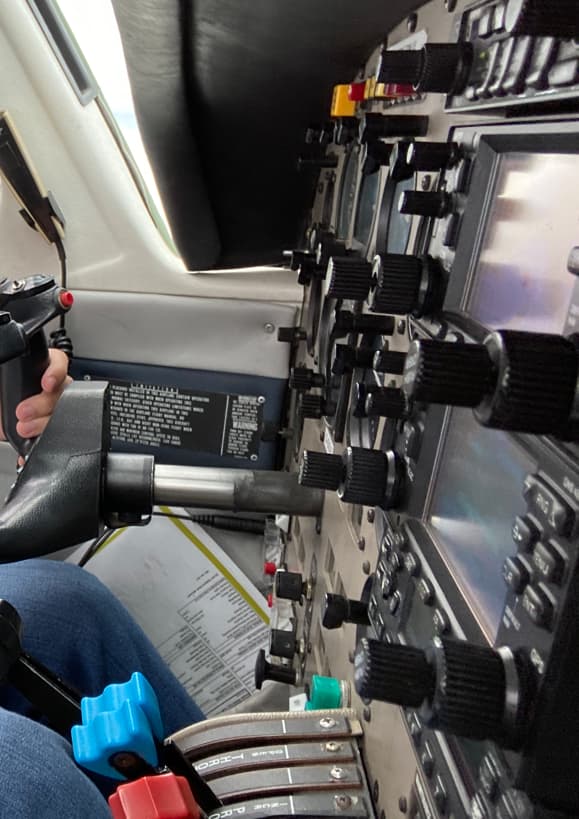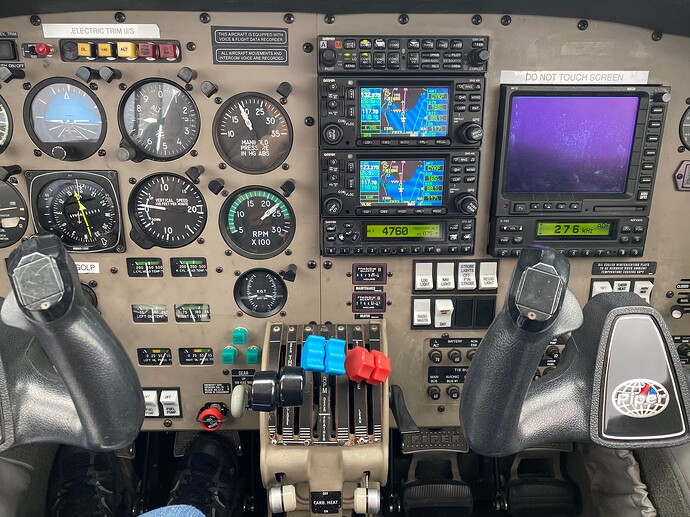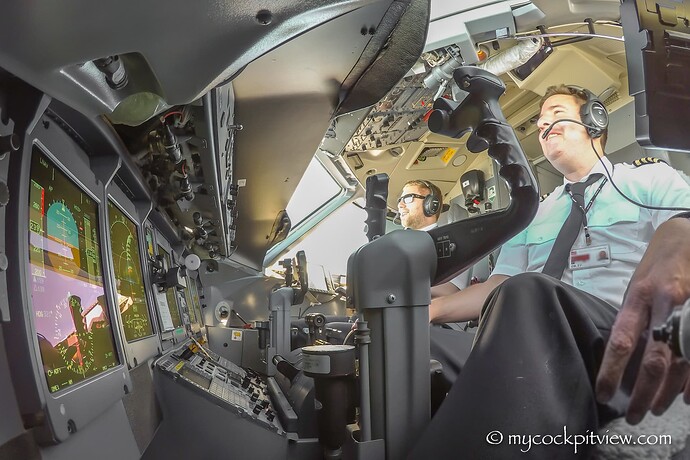I have a couple of issues with the reflection of instruments in the cockpit (other than the obvious fact that it’s a generic image). I’ve been wondering why it didn’t feel real, and I decided to dig into it a bit. My findings are as follows:
First problem
There are generally 3 kinds of glass in this world when it comes to cockpit instruments. I believe MSFS only uses a very simplistic version of number 1 or number 2, which for some instruments makes them too readable (and for others makes them difficult to read):
-
Untreated. This is your analog instrument display with no reflection treatment. One’s reflection appears strongly as a mirror. See the left side of this panel for those kinds of instruments:
-
Antiglare: this is typically common on Garmin displays, but you also see them in modern class cockpits. The reflection is usually hazy in nature and will have a muted greenish or blueish color. Antiglare ONLY works when the underlying screen is immediately in contact with the glass; increased separation causes a hazy picture. See the knocked-out GPS above…or this picture below (particularly the upper EICAS):
-
Antireflective: this will have a clear and unambiguous reflection. However, the colors will be green-ish blue-ish and the reflection will be weaker. See this picture below:
Second problem
Reflection intensity depends on the angle of incidence IRL. For normal glass, the reflectivity is 4% when looking head-on. However, at an angle of approximately 50 degrees (looking at copilot instruments), this reflectivity increases to almost 8% - double the intensity of looking at it straight on.
The formula for light intensity from an angle is given here. Ultimately, there are two formulas: one for light polarized perpendicular to the surface:

…and one for light polarized parallel to the surface:

If you take these R values and average them (assuming all ambient light is non-polarized), you get the following:
(With the equation below, Q representing reflectivity index, x representing angle of incidence):

You will notice that the reflectivity index reaches 1 at ~1.57 radians (90 degrees) - all light reflected and no light transmitted. In other words, the closer you are to looking at a glass instrument at an angle, the less visible the instrument should be because the reflection will be too intense for the user.
Usually, this means two things:
- Depending on the lighting environment in the cockpit, instruments can be (and should be) unreadable under certain lighting circumstances
- This makes the rendering of the cockpit look much more real; I’ve seen pictures in flight sim taken from sharp angles where the viewer can still see the instrument…it just doesn’t feel real, and that’s because in real life, you shouldn’t be able to:
Or even more aggressively (same panel, same instruments):

TL;DR: please make the rendering engine have options for surface treatment of glass cockpit displays (between antiglare, antireflective, and untreated), and please make the reflectivity depend on the angle of incidence of the viewer




